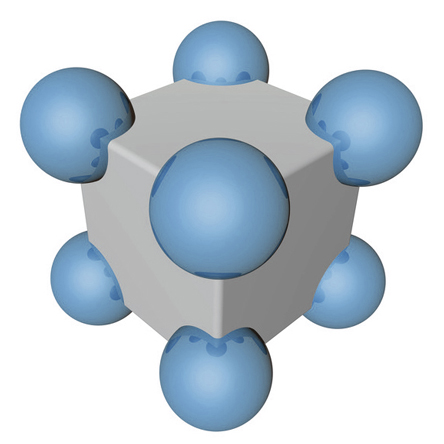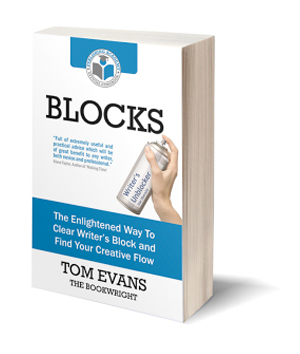What do you know?
 Writing an article on knowledge is potentially a difficult task. It makes you ask the question what do you know and even what qualifies the writer to write knowingly.
Writing an article on knowledge is potentially a difficult task. It makes you ask the question what do you know and even what qualifies the writer to write knowingly.
You have to ask yourself questions like who is doing the knowing and how do you know that you know? For example, you may think you know what is true and right in your head but your gut might tell you it’s wrong. Your heart might not be in it and there may a whisper of doubt sneaking into the back of your mind.
This train of thought also brings into question where the knowing sits. Is it in our cognitive centres, in the very water of our cellular structures or somewhere even more ethereal?
What makes the whole subject even more difficult still is that ‘we know’ there are degrees of knowingness. During the Iraqi conflict, Donald Rumsfeld, the then US Defense Secretary, was caught prevaricating as there were things he knew that he’d rather not share with others. Nonetheless, inadvertently, he gave us a really useful framework for understanding the modern world in his infamous “known knowns” speech.
There’s obviously the stuff we know we know – the Known Knowns – at least that is until we find out whatever we thought we knew, we didn’t know that well after all. I get the Word of the Day from Dictionary.com every day and keep finding words I thought I knew the meaning of actually mean something else.
There’s stuff we know we don’t know – the Known Unknowns – like where we really came from, how come we are self-aware and why toast always seems to fall butter-side down.
There’s a weird category of Unknown Knowns – these are things we know but didn’t know we knew – like someone really likes you but you are just not quite fully aware of it yet.
Finally there are the Unknown Unknowns – these manifest as the Fear of the Unknown. They are the demons that stop us in our tracks. If we don’t stick our heads above the parapet to have a look, we can’t be harmed.
If this isn’t bad enough, what you think you know can get turned on its head in an instant. The ancients knew the Earth was round but in the Dark Ages we were taught it was flat. We now know its round yet everyone uses a map which is flat.
Knowing is altered by perspective. For example, if you add another dimension to the mix, literally, what is curved space and surfaces in a 3-D universe are flat sheets in 4-D. We can see in a 2-D Flatland that the ‘flat people’ could jump up. If they did this, to another ‘Flatander’ they would disappear.
So stating we absolutely know something to be true is inadvisable. All we can ever know is that we don’t know everything. Furthermore, as soon as we know something, there is inevitably something else to learn.
Claircogniscence
Traditionally knowledge has become a left-brained activity based the output from the Scientific Method which runs like this:
- Observe something
- Make a prediction based upon what is observed
- Observe or measure something else against the new prediction
- Make it into a Law – like the Laws of Gravity or Thermodynamics
This is fine until the Laws break down.
A more intuitive basis to work on is tuning into our innate claircogniscence. This a ‘knowing’ version of clairvoyance, clairaudience or clairsentience. The source of the knowing can be from any of our chakra points – normally gut, heart, 3rd eye or crown but also the alpha and omega chakras outside our bodies.
Incidentally, don’t ask me how I know all of this. I just do and I have complete faith that what I am imparting here is knowledge that will appeal to readers of the resulting article.
Claircogniscence is more than just knowing. It’s also an inner sense that it’s OK to know in itself and there is no need to share or even prove what you know. In healing and therapy, it is the most useful tool as you can instantly get a sense of issues and how to treat them.
It’s also a vital part of the creative process. You just know what you are writing, painting or composing is just perfect. You are connected both with your Muse and your audience. You are in flow – and you Know It. It is the progenitor of the most desirable output for the search for knowledge – that of gnosis.
Gnosis
Gnosis is the result of unquestioned claircogniscence and requires no qualification – it just is. The best examples end up being koans, aphorisms or maxims.
These are stories, questions or statements the meaning of which is not best understood by the application rational thinking but may be accessible through intuition. They just feel right.
Examples range from a Zen Koan that gives us an Known Unknown by asking an incisive question like:
“What is your face before your mother and father were born?”
– to one of Hippocrates’ sublime aphorisms that, on first hearing, begets the Unknown Known:
“Life is short, and Art long; the crisis fleeting; experience perilous, and decision difficult.”
– to the pithy and witty Known Known maxims that are the stuff of urban myths such as:
“In an autocracy, one person has his way; in an aristocracy, a few people have their way; in a democracy, no one has his way.”
These kind of statements are just right; we feel it in our water. They are incontestable and don’t lend them to analysis unless you are feeling particularly fastidious.
True gnosis though more traditionally applies to a spiritual knowing.
What’s important here though is that gnosis is something which is personal. For example, it’s said that there are 33 paths of spiritual awakening. Now I don’t know if it’s true there are 33, there could be more or less. What I do know is that as soon as the path or the type of awakening is defined and proclaimed to be “The Way”, we have slipped from gnosis to dogma. All I know for sure is the path and way that I am following seems to be working for me but that I can’t wholeheartedly recommend it to anyone else.
Once you assume a dogmatic position, the acquisition of new knowledge becomes difficult and we are closed off from the next level of awakening.
I’ll leave you with one of my favourite “knowings” from the mind that was Chief Seattle –
“This we know. Man did not weave the web of life; he is merely a strand in it. Whatever he does to the web, he does to himself. Whatever befalls the earth, befalls the sons and daughters of the earth. All things are connected. This we know.”

 If you have an important message you want to share with the world, how do you go about it?
If you have an important message you want to share with the world, how do you go about it?

